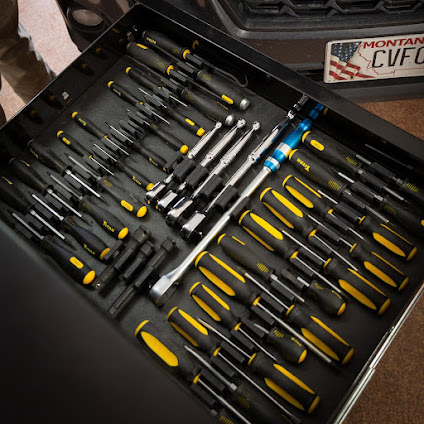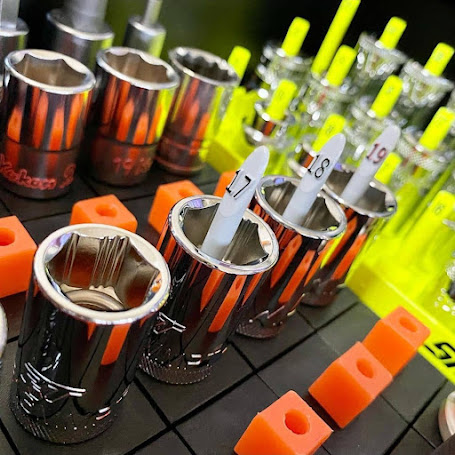Effective Strategies for Toolbox Organization: Tips and Techniques
A well-organized toolbox is an essential asset for any professional tradesperson, DIY enthusiast, or hobbyist. A chaotic and disorganized toolbox can lead to frustration, wasted time, and decreased productivity. On the other hand, a neatly arranged and efficiently organized toolbox can streamline work processes, save time, and enhance overall efficiency. In this article, we will explore various effective strategies for toolbox organization, offering practical tips and techniques to keep your tools in order and easily accessible.
Declutter and Evaluate Your Tools: Before diving into organizing your toolbox, start by decluttering your collection of tools. Carefully assess each tool's usefulness, condition, and frequency of use. Dispose of broken or redundant tools, and consider donating duplicates or tools you rarely use. By reducing clutter, you create more space and ensure that only essential tools remain in your toolbox.
Categorize and Sort Tools: Once you've decluttered your toolbox, categorize your tools based on their functionality and purpose. Common categories may include wrenches, screwdrivers, pliers, hammers, measuring tools, and more. Sorting tools into categories allows you to find specific tools quickly when needed, reducing the time spent searching for the right tool.
Utilize Toolbox Drawer Trays: Many toolboxes come with built-in drawer trays, which offer a great way to keep small tools and accessories organized. Utilize these trays to store nuts, bolts, screws, nails, and other small items that can easily get lost. Consider using dividers to create separate sections within the trays for better organization.
Invest in Toolbox Foam Inserts: Foam inserts are an excellent investment for keeping your tools snugly in place and preventing them from shifting during transportation. Customizable foam inserts can be cut to fit the shape of each tool, ensuring a secure fit for all your tools in the toolbox. This not only helps with the organization but also protects your tools from damage.
Arrange Tools by Frequency of Use: Organize your toolbox in a way that prioritizes frequently used tools for easy access. Place the most commonly used tools in the top compartment or the front section of the toolbox. This arrangement ensures that you don't waste time rummaging through less frequently used tools to find what you need.
Label Tool Storage Areas: Consider labeling the compartments or sections of your toolbox to indicate where specific tools belong. This visual cue helps maintain organization, especially if you work with a team, as everyone will know where to return tools after use. Labels can be as simple as using a marker or employing adhesive labels for a more professional touch.
Utilize Magnetic Tool Holders: Magnetic tool holders are versatile solutions for toolbox organization. These strips or bars can be mounted on the inside of toolbox lids or workspace walls. They offer a convenient way to store frequently used metal tools, such as screwdrivers, pliers, and wrenches, making them easily accessible and visible.
Incorporate a Pegboard or Tool Panel: For a more extensive collection of tools, consider incorporating a pegboard or tool panel on the wall above or behind your workspace. Pegboards allow you to hang a variety of tools, ensuring quick access and a clutter-free toolbox. By outlining the tool shapes with marker or tape, it's easy to spot missing tools and maintain organization.
Carry Only Essential Tools On the Go: If you frequently carry your toolbox to different job sites, consider packing only the essential tools for each specific task. Transporting a heavy and overloaded toolbox can be cumbersome and disorganizing. By selecting tools based on the job's requirements, you keep your toolbox lightweight and easy to manage.
Regularly Maintain and Reorganize: Toolbox organization is an ongoing process. Schedule regular maintenance sessions to reevaluate the organization system and adjust it as needed. As you acquire new tools or change the nature of your work, adapt your toolbox organization to accommodate these changes.
Conclusion
An efficiently organized toolbox is a fundamental aspect of any successful tradesperson or DIY enthusiast. By employing effective strategies such as decluttering, categorizing, using toolbox inserts, and arranging tools by frequency of use, you can optimize your toolbox organization. Incorporating magnetic tool holders, pegboards, and thoughtful labelling further enhances accessibility and efficiency. Regular maintenance and periodic adjustments to your toolbox organization ensure that your tools remain easily accessible and ready for any task. With these tips and techniques, you can elevate your toolbox organization to a new level, saving time, reducing frustration, and boosting overall productivity in your projects.



Comments
Post a Comment